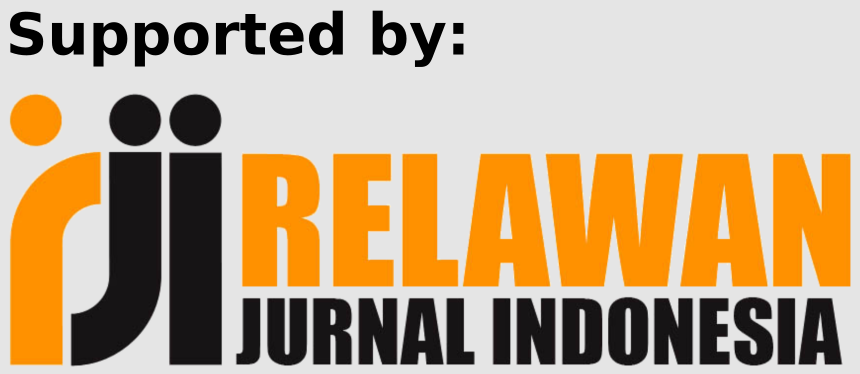The use of smartphones as educational media for optimizing maternal and child health: A qualitative systematic review
DOI:
https://doi.org/10.31101/jhtam.3794Abstract views 531 times
Keywords:
Education, Maternal, Child, Health, SmartphoneAbstract
Downloads
References
Adelekan, B., Goldson, E., Abubakar, Z., Mueller, U., Alayande, A., Ojogun, T., Ntoimo, L., Williams, B., Muhammed, I., & Okonofua, F. (2021). Effect of COVID-19 pandemic on provision of sexual and reproductive health services in primary health facilities in Nigeria: a cross-sectional study. Reproductive Health, 18(1), 1–12. https://doi.org/10.1186/s12978-021-01217-5
Agarwal, Pahl, & Adams. (2019). The impact of mobile health interventions on maternal health outcomes: A systematic review. Journal of Global Health, 9(1), 010401.
Brinkel, Dako-Gyeke, Krämer, May, & Fobil. (2017). An investigation of users’ attitudes, requirements and willingness to use mobile phone-based interactive voice response systems for seeking healthcare in Ghana: a qualitative study. Public Health, 14(4), 125–133. https://doi.org/10.1016/j.puhe.2016.11.017
Costantino, Mazzucco, Bonaccorso, Sciortino, Cimino, Pizzo, Conforto, Calò, & Giliberti. (2022). A cross-sectional study on smartphone uses among pregnant women attending childbirth classes in the Metropolitan Area of Palermo, Italy: The Stop-Phone study. Annali Di Igiene Medicina Preventiva e Di Comunita, 35(3), 319–330.
Deave, Kendal, Lingam, Day, Goodenough, Bailey, Ginja, Nightingale, & Coad. (2022). A study to evaluate the effectiveness of Best Beginnings’ Baby Buddy phone app in England: A protocol paper. In Primary Health Care Research and Development.
Edmonds, J. K., Paul, M., & Sibley, L. M. (2011). Type, content, and source of social support perceived by women during pregnancy: Evidence from Matlab, Bangladesh. Journal of Health, Population and Nutrition, 29(2), 163–173. https://doi.org/10.3329/jhpn.v29i2.7859
Ekramzadeh, M., Hajivandi, L., Noroozi, M., & Mostafavi, F. (2020). Psychological experiences of adolescent girls with polycystic ovary syndrome: A qualitative study. Iranian Journal of Nursing and Midwifery Research, 25(4), 341–347. https://doi.org/10.4103/ijnmr.IJNMR_276_19
Gabriela, Frid, Kelly, Bogaert, Katherine, & Chen. (2021). . Mobile Health Apps for Pregnant Women: Systematic Search, Evaluation, and Analysis of Features. Journal of Medical Internet Research, 23(10).
Gilano, Dekker, & Fijten. (2024). The role of mHealth intervention to improve maternal and child health: A provider-based qualitative study in Southern Ethiopia. PLoS ONE, 19(2).
Hantsoo, L., Criniti, S., Khan, A., Moseley, M., Kincler, N., Faherty, L. J., Epperson, C. N., & Bennett, I. M. (2018). Mobile application for monitoring and management of depressed mood in a vulnerable pregnant population. Psychiatr Serv, 69(1), 104–107. https://doi.org/10.1176/appi.ps.201600582.Mobile
Hastuty, Y. D., & Ariska, M. (2022). Literature Review: Utilization of Binanong Leaves and Red Betel Leaves for Healing Perineal Wounds. Journal of Midwifery and Nursing, 4(2), 63–68. https://doi.org/10.35335/jmn.v4i2.2186
Hazra, Khan, & Mondal. (2018). Mobile Phone Messaging to Husbands to Improve Maternal and Child Health Behavior in India. Journal of Health Communication, 23(6), 542–549. https://doi.org/10.1080/10810730.2018.1483444
Huang, Yan, & Zhang. (2021). Mobile health applications for improving maternal and child health: A systematic review. Journal of Medical Internet Research, 23(5), e23036.
Huda, Alam, Tahsina, Hasan, Khan, Rahman, & Siddique. (2018). Mobile-based nutrition counseling and unconditional cash transfers for improving maternal and child nutrition in Bangladesh: Pilot study. JMIR MHealth and UHealth, 6(7).
Isinkaye, F. O., Awosupin, S. O., & Soyemi, J. (2017). A Mobile based expert system for disease diagnosis and medical advice provisioning. International Journal of Computer Science and Information Security (IJCSIS), 15(1), 568–572.
Jiang, Li, Wen, Baur, He, Ma, & Qian. (2018). A short message service intervention for improving infant feeding practices in Shanghai, China: Planning, implementation, and process evaluation. JMIR MHealth and UHealth, 6(10). https://doi.org/10.2196/11039
Loretta, Musgrave, Nathalie, Kizirian, Caroline, Adrienne, & Gordon. (2021). Mobile Phone Apps in Australia for Improving Pregnancy Outcomes: Systematic Search on App Stores. JMIR MHealth and UHealth, 8(11), e22340.
Lund, Nielsen, & Hemed. (2020). MS reminders for vaccination in low- and middle-income countries: A systematic review and meta-analysis. International Journal of Epidemiology, 49(5), 1477–1488.
Mustopa, Noh, & Hafizurrachman. (2021). Supporting Factors in Using a Smartphone to Support Access Maternal Health Services in Rural Indonesia: A Qualitative Study. In Malaysian Journal of Medicine and Health Sciences, 17(11).
Nainggolan, Rochadi, & Lubis. (2021). The Effectiveness of Integrated Counseling on Pregnant Mothers to Improve Knowledge on Pregnant Mothers in Pematangsiantar City. Budapest International Research and Critics Institute (BIRCI-Journal). Humanities and Social Sciences, 3(3), 2277–2286. https://doi.org/10.33258/birci.v3i3.1161
Osinowo, K., Sambo-Donga, F., Ojomo, O., Ibitoye, S. E., Oluwayemi, P., Okunfulure, M., Ladipo, O. A., & Ekholuenetale, M. (2021). Resilient and Accelerated Scale-Up of Subcutaneously Administered Depot–Medroxyprogesterone Acetate in Nigeria (RASuDiN): A Mid-Line Study in COVID-19 Era. Open Access Journal of Contraception, Volume 12(December), 187–199. https://doi.org/10.2147/oajc.s326106
Phommachanh, S., Essink, D. R., Jansen, M., Broerse, J. E. W., Wright, P., & Mayxay, M. (2019). Improvement of Quality of Antenatal Care (ANC) Service Provision at the Public Health Facilities in Lao PDR: Perspective and Experiences of Supply and Demand Sides. BMC Pregnancy and Childbirth, 19(1), 1–14. https://doi.org/10.1186/s12884-019-2345-0
Porte, La, Kim, Adams, Zagorsky, Gibbons, & Silver. (2020). Feasibility of perinatal mood screening and text messaging on patients ’ personal smartphones. Archives of Women’s Mental Health, 23(1), 181–188. https://doi.org/10.1007/s00737-019-00981-5
Porte, L. M. La, Kim, J. J., Adams, M. G., Zagorsky, B. M., Gibbons, R., & Silver, R. K. (2020). Feasibility of perinatal mood screening and text messaging on patients ’ personal smartphones. Archives of Women’s Mental Health, 23, 181–188. https://doi.org/10.1007/s00737-019-00981-5
Sarina, Mkhize, M., Farao, J., Deborah, L., Shandu, Livhuwani, Muthelo, & Lauren. (2023). Digital Health Technologies for Maternal and Child Health in Africa and Other Low- and Middle-Income Countries: Cross-disciplinary Scoping Review With Stakeholder Consultation. Journal of Medical Internet Research, 25(1), e42161.
Simarmata, Marlina, Luhulima, Udjung, & Langi. (2024). Antenatal Care Counseling for Pregnant Women as an Effort to Prevent Stunting. Asian Journal of Community Services, 3(4), 385–392. https://doi.org/10.55927/ajcs.v3i4.8787
Souza, Santos, D., Santos, da C., & Silva, D. (2021). Effectiveness of mobile applications in pregnant women’s adherence to prenatal consultations: randomized clinical trial. Revista Brasileira de Enfermagem,. 74(5), 1–8. https://doi.org/10.1590/0034-7167-2019-0599
Sullivan, Ahmed, & Mappin-Kasirer. (2021). Policy frameworks for mobile health interventions in maternal and child health: A global perspective. Ealth Policy and Planning, 36(8), 1080–1090.
Velu, Beukering, V., Schaafsma, Frings-Dresen, Mol, Post, van der, & Kok. (2017). Barriers and facilitators for the use of a medical mobile app to prevent work-related risks in pregnancy: A qualitative analysis. JMIR Research Protocols, 6(8). https://doi.org/10.2196/resprot.7224
Venkataramanan, Subramanian, Alajlani, & Arvanitis. (2022). . Effect of mobile health interventions in increasing utilization of Maternal and Child Health care services in developing countries: A scoping review. In Digital Health. SAGE Publications Inc., 8(1). https://doi.org/10.1177/20552076221143236
Downloads
Published
How to Cite
Issue
Section
License
Copyright (c) 2024 Devi Maya Arista, Nidya Comdeca Nurvitriana, Karunia Wijayanti, Vina Firmanty Mustofa

This work is licensed under a Creative Commons Attribution-ShareAlike 4.0 International License.
Authors who publish with Journal of Health Technology Assessment in Midwifery agree to the following terms:
- Authors retain copyright and grant the journal right of first publication with the work simultaneously licensed under a Creative Commons Attribution License (CC BY-SA 4.0) that allows others to share the work with an acknowledgment of the work's authorship and initial publication in this journal.
- Authors are able to enter into separate, additional contractual arrangements for the non-exclusive distribution of the journal's published version of the work (e.g., post it to an institutional repository or publish it in a book), with an acknowledgment of its initial publication in this journal.
- Authors are permitted and encouraged to post their work online (e.g., in institutional repositories or on their website) prior to and during the submission process, as it can lead to productive exchanges, as well as earlier and greater citation of published work.

Journal of Health Technology Assessment in Midwifery is licensed under a Creative Commons Attribution-ShareAlike 4.0 International License..













